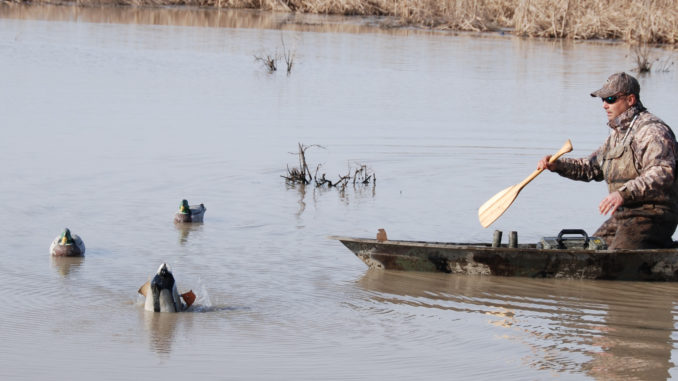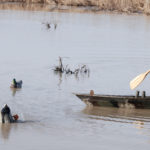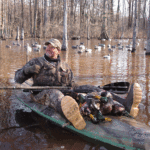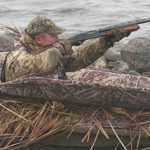
Kayaks can be waterfowler’s ‘other’ best friend
November is typically the month that kicks off the official waterfowl season. Even though the season doesn’t come in until the Saturday before Thanksgiving, it’s the month when all the planning and plotting is done — as well as getting your feet wet with the new season.
I’ve hunted waterfowl across the vast majority of the state, from farm ponds and big impoundments in the Upstate to swamps and wide rivers in the Midlands and coastal marshes in the Lowcountry. One day, I hope to hunt eiders and scoters off the beach, but that still remains on my bucket list.
What would you guess would be the most common means of accessing all of these hunting areas? Okay, it’s a paddling column, so you looked at the answer in the back of the book and guessed kayak or canoe? Well, you’re wrong; I got there by truck. After the truck there may or may not have been an ATV to get down into the woods; most likely it was my size-14 chest waders that got me to my final destination. The point is, from the mountains to the coast, rarely has a motor boat — even one with one of those fancy mud motors — been my most common means of locomotion for waterfowl hunts.
Several years ago, a friend and I were drawn to hunt the famous Santee Coastal Reserve, specifically, the Cedar Island tract. Once we got out of the truck at the dock, we were transported by large vessel across the Santee River to a series of canals. From there, one of the SCDNR guides ferried us in a big aluminum boat around the canals to our own flooded impoundment. Once we got to the impoundment, however, we were instructed to make our way to the blind in a small skiff, what an old friend long gone would have called a bateau. We took the bateau and paddled out to the blind, then used it again to access the far corner, where the birds were congregating to avoid the blind, and we shot lots of ducks.
Since that day, the value of a small, working boat has not been lost on me. While I am a big fan of floating rivers in a camouflaged kayaks, I am a bigger fan of killing ducks on the far side of some flooded beaver swamp. Even if there’s access by foot or four-wheeler around the swamp, having a small working boat is invaluable for putting out decoys, picking up ducks, and generally staying mobile in an area that’s a flooded logjam under the surface.
Working boats share some characteristics: they’re small, portable, rugged and typically have only a few inches of gunwale between you and the ensuing wetness below. Probably the most common is an aluminum johnboat, the means of propulsion being a paddle. Regardless, those who ply waters big and small in a one-man craft understand that it’s not the means of propulsion that is the appeal. The challenge of using a vessel where balance, efficiency of movement and stealth put you one-on-one with the quarry — be it finned, feathered or furred — is what trips the breakers for most Palmetto paddlers.
This is also the time when all the waterfowling catalogs arrive in the mail. I love looking in the back of these catalogs where the amphibious boats dwell. One style that has struck my fancy is the line of sneak boats offered by Minnesota’s Beavertail Products. In addition to a lot of other cool waterfowling stuff, Beavertail offers three sneak boats — the Phantom, the Final Attack, and the Stealth — which comes in one- and two-man versions.
Touted as waterfowling kayaks, these sneak boats are constructed of 100-percent compounded polyethylene in a one-piece, roto-molded, low-profile design. Stability is high on the priority list for these boats, which offer either a flat, low-profile bottom or a twin-hull, catamaran-style bottom for exceptional stability. Ranging in weight from 55 to 120 pounds, these boats are also light enough to transport to the backwaters where ducks can go and other hunters can’t go. The Final Attack even has a set of wheels molded into the stern for ease of transport across fields.
The best feature of all of these sneak boats is that they toe the line between paddle boats and layout blinds. How many times have you been able to get into an area in a powerboat, then spent precious time before legal shooting light hiding the boat and camoflauging the spot you wanted to hunt? Then, if that spot wasn’t exactly where the ducks were, you wasted more time moving or watching ducks land just out of reach?
Using either natural or man-made camo, you can paddle up, brush up, and be hunting — all with the comfort of a dry, molded seat — in just a matter of minutes. Check out explorebeavertail.com for more information.







Be the first to comment